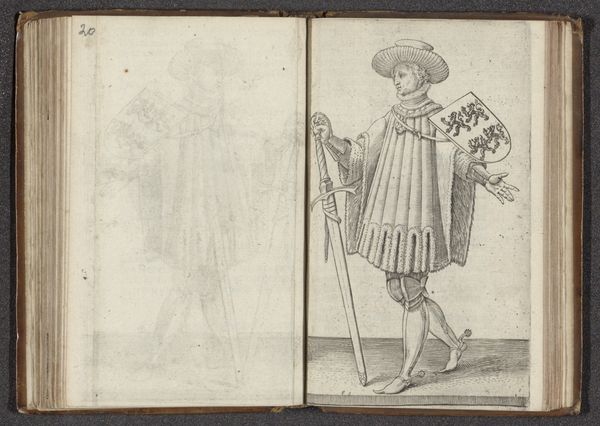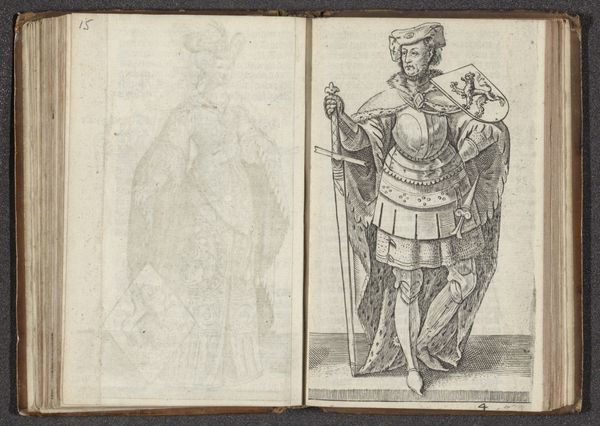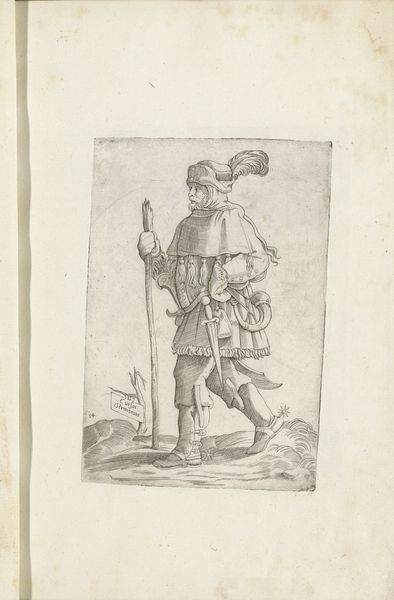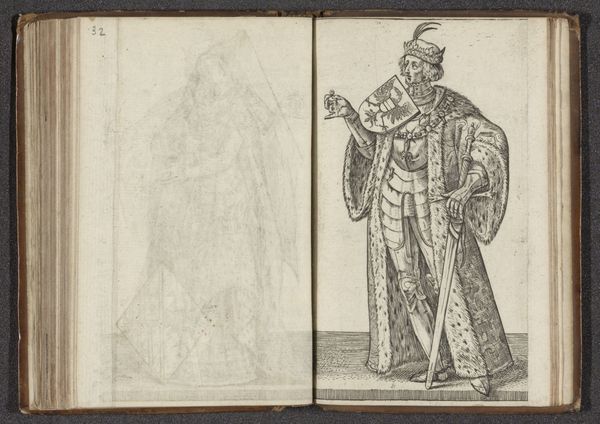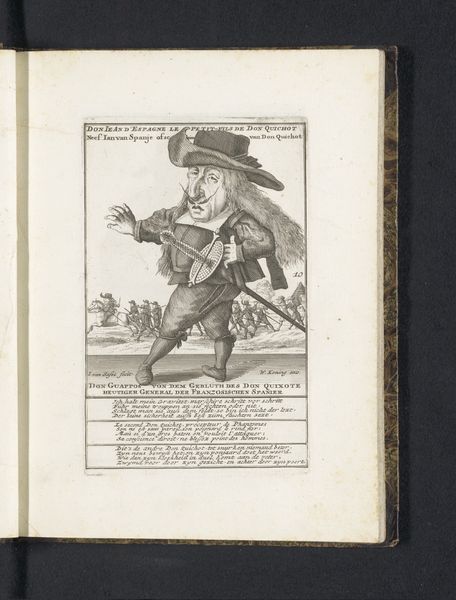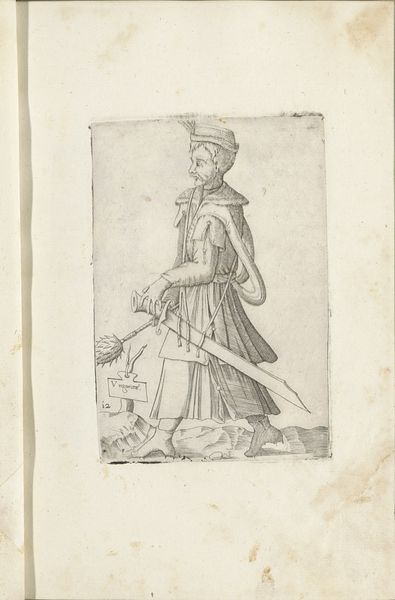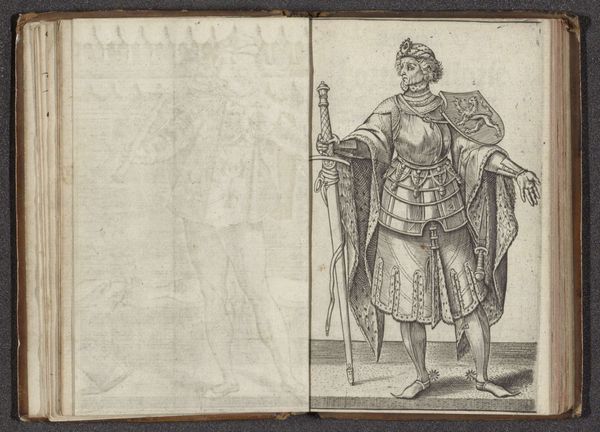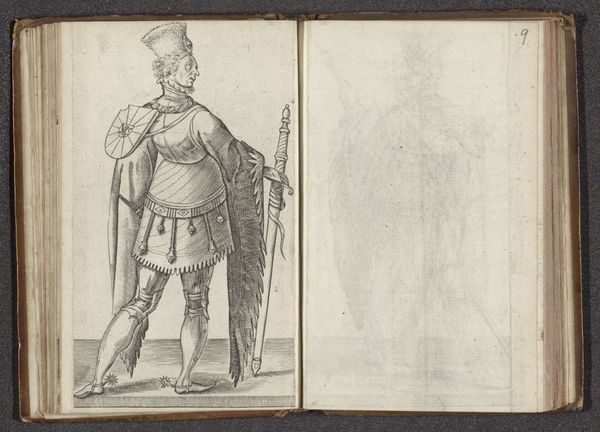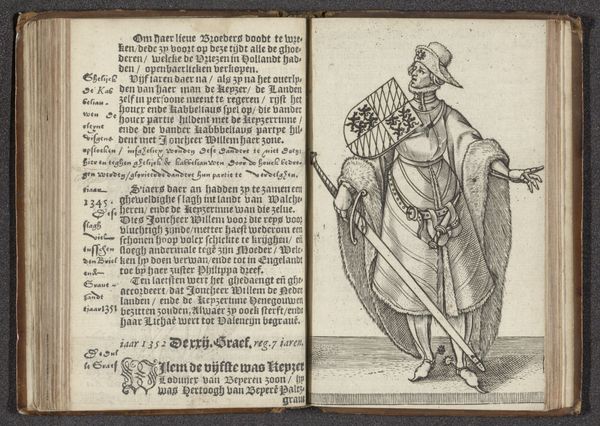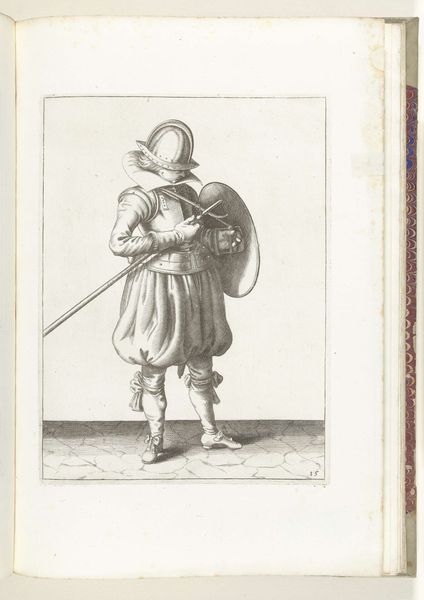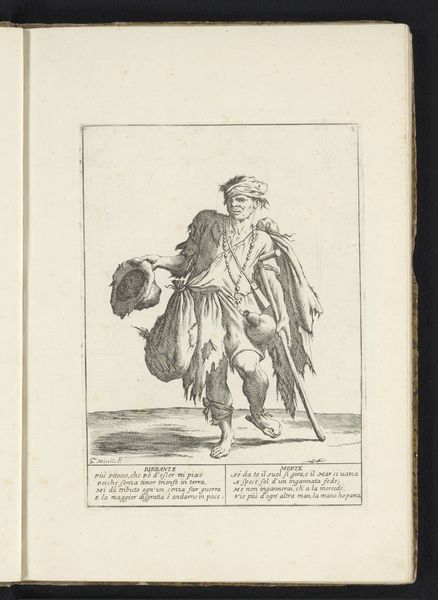
drawing, paper, ink
#
portrait
#
drawing
#
dutch-golden-age
#
mannerism
#
figuration
#
paper
#
11_renaissance
#
ink
#
coloured pencil
Dimensions: height 135 mm, width 85 mm
Copyright: Rijks Museum: Open Domain
Curator: This is Hendrick Goltzius' "Filips II", a drawing rendered in ink on paper, dating back to 1586-1587. It’s currently housed here at the Rijksmuseum. Editor: It's interesting to see the subject captured like this. At first glance, the meticulous details evoke a certain... aloofness? A powerful distance, perhaps? Especially contrasted with the faint ghost-like figure on the facing page. Curator: Yes, that preliminary sketch offers a fascinating glimpse into Goltzius’ process, revealing the careful planning involved. This portrait of Philip II needs to be viewed within the political landscape of the Dutch Golden Age and his complicated history as king of Spain and Portugal during the Dutch Revolt. His reign shaped not just European politics, but also the art of the era. Editor: Absolutely, the context is crucial. The piece presents such a studied image of power; his stiff posture, the elaborate detailing in his clothing, and of course the shield bearing the arms – a statement of authority during a period of immense social and political upheaval. This image surely carries the weight of those power struggles. Curator: Indeed, images such as this one reinforced ideas of sovereignty. Goltzius, working within a well-established tradition of portraiture, manipulates visual language to affirm Philip II’s position. Consider the circulation of such images through prints, reaching various segments of society and shaping perception. Editor: That's a critical point. What was the effect on the Dutch populace seeing that figure portrayed in such a heroic, idealized way in comparison to what they had actually known in reality? This portrait, therefore, becomes an active participant in the narrative of identity and resistance. It also invites us to consider the tension between representation and reality. Curator: The act of representing Philip II visually – who controlled vast areas, of course – became part of that control mechanism. Goltzius shows us how the artistic process intersected directly with questions of authority, religious power and politics in the 16th century. Editor: Seeing art in such a rich historical setting adds further nuance. It helps us interrogate those portrayals of power while making us critically examine the art practices of that period. Thanks for helping me view the artwork within its specific timeframe! Curator: And thank you, for helping see beyond just the surface details of this period drawing.
Comments
No comments
Be the first to comment and join the conversation on the ultimate creative platform.

